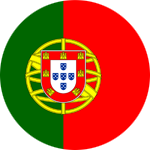Whales during our trip
Date: 07.03.21
Position: Sao Jorge, Azores
Whale on portside! When somebody screams this, everybody runs on deck in expectation. Then we all stand there and keep looking for the whale. Not all of us can wait long enough, because some whales can dive up to 20 minutes. But those who wait are mostly rewarded. We have seen many different species of whales so far:
We sighted the very first whales in the English canal. A small group of common dolphins accompanied us for hours. And yes, dolphins are also whales. There are two whale families: The baleen whales that only eat krill and the toothed whales, who – like their name already indicates – have teeth. Dolphins belong to the tooth whales. They have accompanied us through the whole Biscay. Overall, we have met many dolphins on our journey so far.
We have seen the first baleen whale between La Coruna and the Canaries. A big Fin whale appeared on the surface during clearship on a Saturday – the same day we had taken a bath in the deep Atlantic Ocean.
On the stage from the Cape Verde to the Azorean Islands, our English and biology teacher had shown us the use of a so-called hydrophone, with which we could hear and record the calls of different whales. We could here the clicking of sperm whales and dolphins and the singing of other whales. One night was especially exiting. We have a so-called wake-up list for special natural phenomena or whale sightings in the night. In this one night we were awakened. We heard many blows without being able to see them during the dark. Luckily the whales stayed many hours. After sunrise we could see a Minke whale in the sunrise and diving under the Thor and if you were under deck you could even hear the whale’s sonar. Furthermore, the whole spectacle was recorded with our hydrophone.
Right now we are on the Azorean Islands. There are a lot of whales, because the Azores are a popular food stop for many whales on their migration. Therefore, many whales were hunted on the Azores until the 1980’s – especially sperm whales. Everyone wanted to win their expensive oil. This had a large impact on the Azorean economy and culture. And you can still notice that today. In Horta, there are many souvenirs with a sperm whale on it which you can buy in every second store. When whales were hunted, there were lookouts on land with telescopes who looked for the blast of whales. Sperm whales are the only whales, who have their blowhole on the side and therefore blow diagonally. These lookouts still exist today. But not for catching whales, but for the whale watching.
We also went whale watching. We were divided into four groups, which in small tubing boats went one after the other to the open sea. Three groups were able to see a blue whale – the biggest animal that ever existed on our blue planet. But we did not see much of him, and that´s why he didn´t look so big. Our guide said that it was just a small one. The other group saw a group of rare beaked whales.
Although, the Azorean Islands are known for sperm whales, we haven’t seen one yet, but we are still on the way around the Azores. Maybe we´ll see some more of these impressive creatures in the near future crossing our way.

